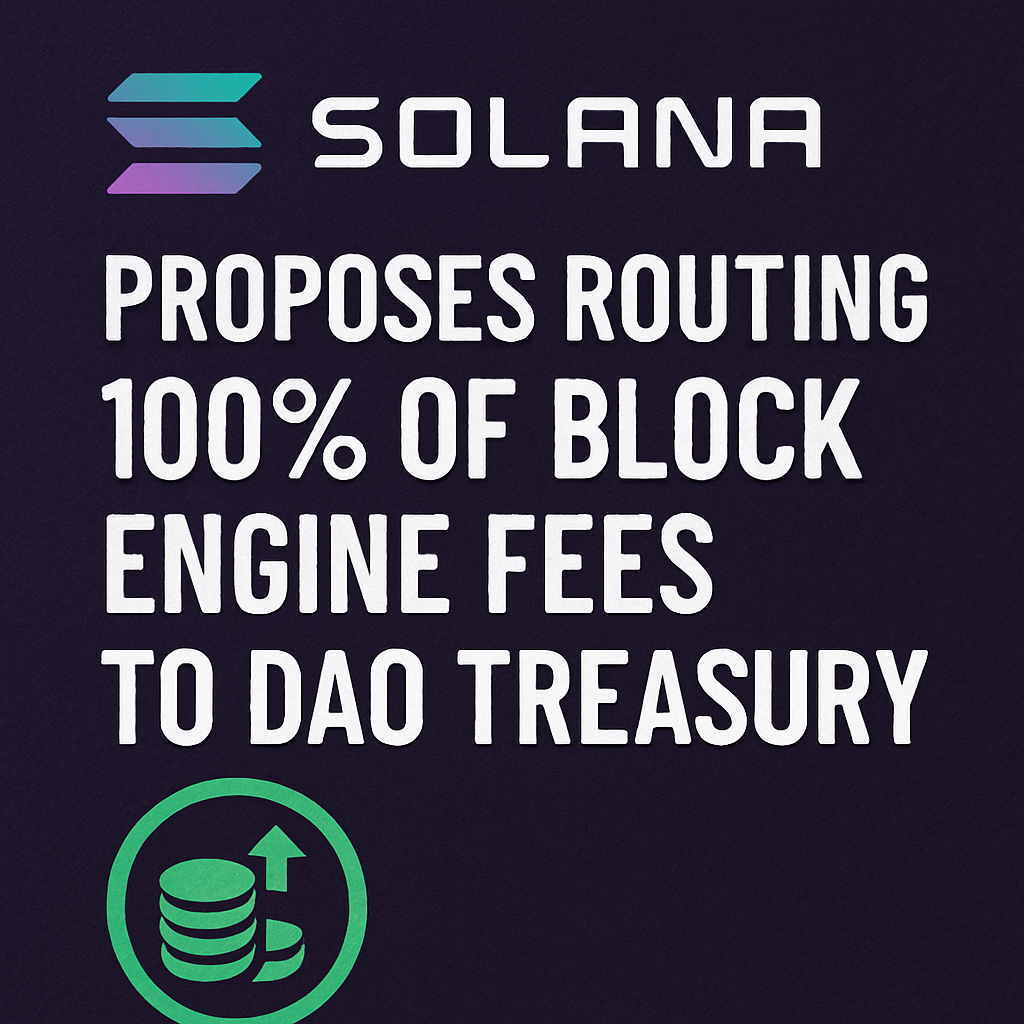Jito Labs has launched a governance proposal known as JIP-24, seeking to route 100% of protocol fees to the Jito DAO treasury. Under the existing model, Block Engine fees are divided equally between Jito Labs and the DAO, with the network’s Block Assembly Marketplace (BAM) fees similarly shared. The new proposal would eliminate the split, directing the full 6% fee—and all future BAM revenue—to the DAO, amplifying tokenholder incentives.
The revenue reallocation would be executed via revenue routing transactions (RRTs) or equivalent configuration updates, with publicly disclosed treasury addresses ensuring transparency. The Cryptoeconomics SubDAO (CSD), established under JIP-17, would manage the newly consolidated funds, proposing budgets for token buybacks, yield subsidies and other value-accrual strategies aligned with long-term growth objectives.
BAM, Jito’s programmable block-assembly framework, unlocks custom “plugins” that modify transaction sequencing logic. This feature has the potential to generate an estimated $15 million in new annual revenue, all of which would flow directly into DAO-controlled treasury. JIP-24 underscores Jito’s commitment to decentralization, positioning the DAO at the center of both technical and economic governance.
Supporters argue that consolidating fee revenue under tokenholder control will bolster alignment between network growth and community interests, driving development of new MEV-focused tools and plugins. Critics point to the reduced budget for the core team, raising concerns about sustainable engineering resources. The JIP-24 vote is scheduled for later this month, with results expected to shape Jito’s financial roadmap and tokenomics model in the year ahead.
If passed, JIP-24 will mark a pivotal shift in Solana’s DeFi landscape, reinforcing DAO authority and demonstrating a replicable model for decentralized treasury governance across blockchain ecosystems. Tokenholders are encouraged to review the full proposal on the Jito forum and participate in the on-chain vote to determine the network’s future direction.

Comments (0)